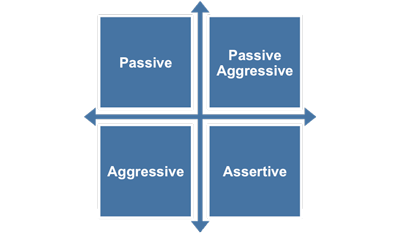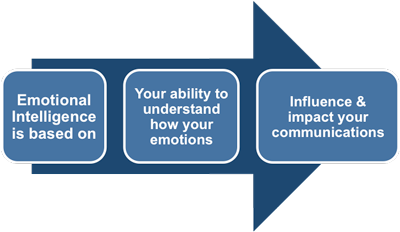Effective Communication in the Workplace - Attitudes to Communications
Effective workplace communication depends on your ability to read the attitude of the other person or group. This is something that can be picked up from the behavior you see and will reflect their emotions and feelings towards the communication.
The emotions you identify throughout your communication will alert you to any need to alter your communication style to suit that emotion being displayed. This is important whether you communicating at work or in your personal life.
Being able to adapt your communication style will aid you in achieving your objective. There are four types of attitudes towards communication:
• Passive
• Passive Aggressive
• Aggressive
• Assertive
Passive Attitude
Firstly, there is the 'Passive' communications attitude. This best describes someone who tends to remain silent and go along with other people's views and opinions, even if they disagree with them.
You may recognize this individual within your team or department and have thought that they were uninterested in the discussion so did not ask for their views. Another possibility is that they are a Thinker communicator who is hesitant to join in because they lack the information to support their views. By training your observation and listening techniques to pick up on such nuances you will be able to greatly improve the effectiveness of your communication.
 |
Passive Aggressive Attitude
The second communication attitude is known as 'Passive Aggressive.' You will be able to identify such individuals in your discussions because they are the ones who use their body language or tone of voice to gain control over people or situations.
For example, they may use sarcasm to subtly disrupt proceedings and manipulate a discussion to their viewpoint without being confrontational. When you see this happening you will need to regain control of the conversation and create a more positive and effective atmosphere so that you can attain your objective.
This may be something an Active communicator does to keep the discussion moving along at their own pace. It is also a way someone who is a Connector may respond if they feel people's feelings are being overlooked or ignored.
Aggressive Attitude
The next communication attitude is called 'Aggressive.' This behavior, if not brought swiftly under control, is very disruptive and destructive. This attitude describes a one-way style of communication as the person is not listening to or acknowledging anyone else in the exchange.
You will be able to recognize this sort of person because they will be expressing their views strongly. They will want to control the exchange so that they can achieve their own ends. Such individuals often display body language that is dismissive or threatening.
Assertive Attitude
The fourth communications attitude, known as 'Assertive,' is the one you and others in the exchange need to adopt in order to communicate successfully. This attitude creates an environment of honest and open communications where people are able to express their beliefs and views.
This attitude encourages people to feel comfortable expressing themselves because they know that opinions will be listened to and respected whether or not they are agreed with.
In your management role you should always display an assertive attitude. The skill is learning to adapt what you say during the exchange so that you efficiently achieve your objective without alienating anyone.
 |
This relies on your emotional intelligence, which can be defined as your ability to control and manage your own emotions and to understand those of others. It is described in detail in the eBook 'Understanding Emotional Intelligence,' which you can download free from this website.
Your ability to identify and respond appropriately to other people's emotions is reflected in your capacity to build rapport, empathy, and relationships. Those who have excellent interpersonal skills and emotional intelligence tend to be more successful and productive.
The first step you can take to achieve this is to have a clear understanding of how your own emotions influence and impact your effectiveness in communicating. Your aim is to ensure that your emotions inform your communications rather than hijack or sabotage them.
You may also be interested in:
Effective Communication in the Workplace | Workplace Communication Styles | Recognizing Workplace Communication Styles | Perceptual Preferences | Communication Research | Using the RESULT Principle | Barriers to Communication.



